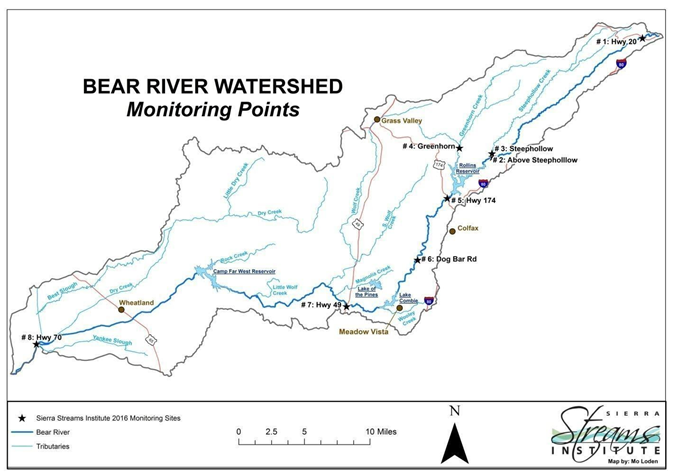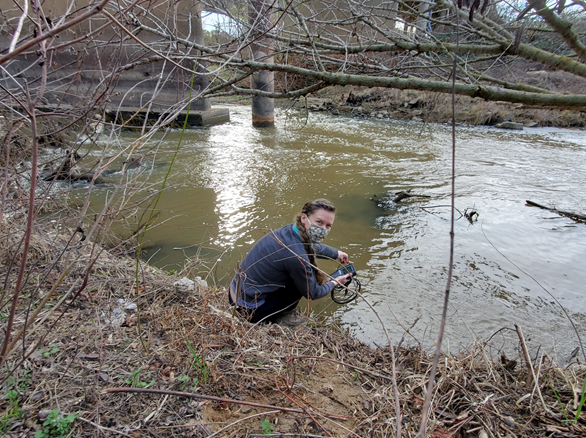Background and History:
The Bear River, flowing from its headwaters to the confluence with the Feather River, spans 73 miles. Its waters are heavily managed through dams and diversions. Though it is one of the more degraded watersheds in the area, the Bear River is one of the least monitored.
SSI began its Bear River monitoring program in 2016. While some sites have been discontinued over the years, SSI currently monitors at 10 locations throughout the watershed. Data collected from our monitoring program is used to inform the Bear River restoration plan.
Recently, SSI reinstated monitoring at two previously suspended sites to monitor the effectiveness of erosion mitigation efforts along the River Fire burn scar. So far we have seen little indication of erosion!
This program is only made possible with volunteers!

Volunteer Responsibilities:
We have 10 monitoring sites along the Bear River. Volunteers work in pairs and typically monitor the same site each monitoring period. Volunteers commit 1 to 3 hours every other month, beginning in February of each year. Hours can vary depending on the location of their site.
A typical monitoring day involves:
- Picking up supplies from the SSI office.
- Navigating to the monitoring site.
- Collecting water chemistry data, including dissolved oxygen, conductivity, pH, and turbidity, as well as water samples, which are taken back to SSI’s lab and analyzed for nitrate (NO3), orthophosphate (PO4), total coliform, and E.coli bacteria.
- Returning supplies and samples to the SSI office.

Become a Water Monitoring Volunteer:
- Fill out the form on sierrastreamsinstitute.org/volunteer/ or click here.
- Attend a monitoring training to learn how to use each of our monitoring devices and collect reliable data.
- Get out there!
For more information, contact Emma Walker, River Scientist, emma@sierrastreamsinstitute.org
Join us for our January 8 Water Quality Monitor Volunteer Training! Learn more Here


Interested in volunteering for a Bear River monitoring site. I had experience with the SYRCL monitoring program though it is dated. Certainly need a refresher.